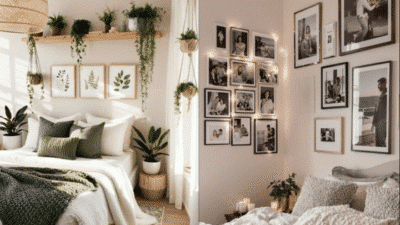If you want your home to feel like a warm, inviting retreat, you’re in the right place. Cozy interior design is all about making your space comfortable and relaxing, no matter its size or style. You can create a welcoming atmosphere by combining soft textures, warm lighting, and thoughtful decorative touches that make every room a place you look forward to spending time in.
Small changes like layering plush throws, adding pillows, and choosing a soothing color palette can quickly turn any room into a cozy haven. Whether you love rustic charm or prefer a more modern look, the right mix of textiles, lighting, and accessories will help you achieve a balanced, comfortable environment.
Key Takeaways
- Cozy design starts with warm colors and plenty of textures
- Lighting and natural elements play a big role in comfort
- Comfort-focused decor transforms ordinary rooms into retreats
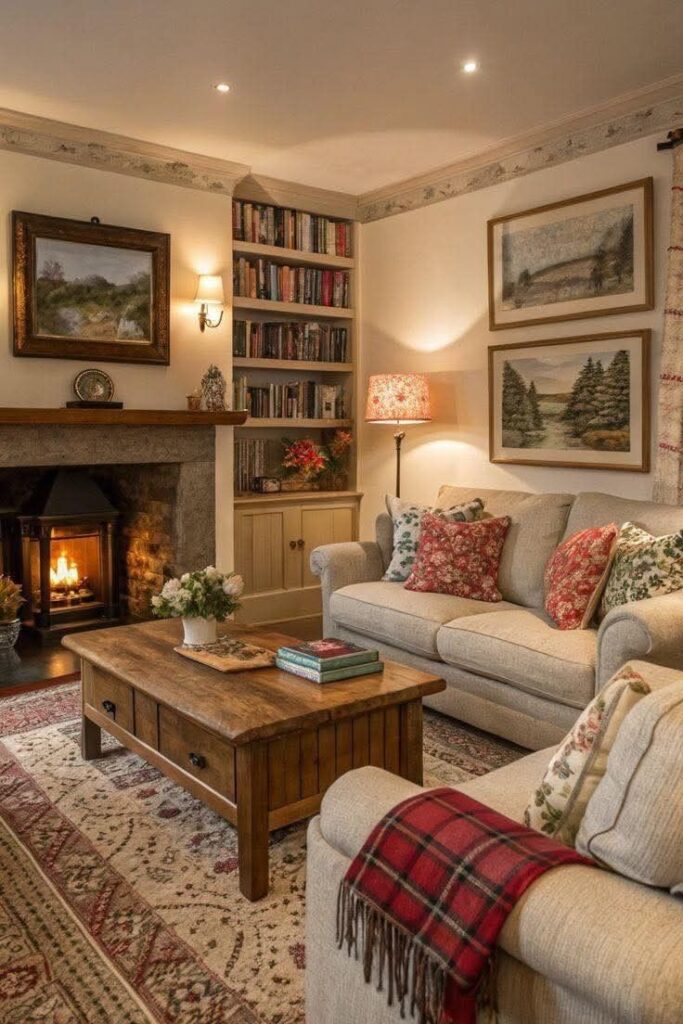
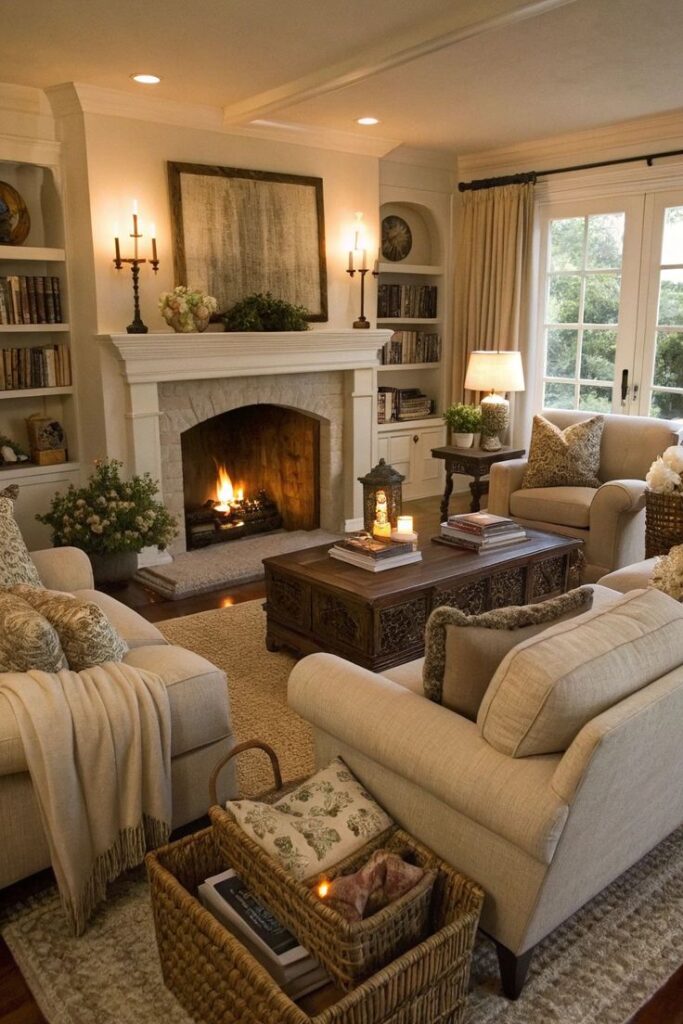
Fundamentals of Cozy Interior Design
A cozy interior relies on thoughtful choices that promote both physical comfort and a relaxed emotional atmosphere. Making your space inviting means focusing on warmth, balanced layouts, and practical design details that serve your daily life.
Defining Cozy Home Aesthetics
The heart of a cozy home is its visual warmth and welcoming feel. Warm, natural colors such as beige, taupe, cream, and soft greys help create a soothing background. You can add depth and personality with accents in earth tones, muted greens, soft blues, or rust.
Textures are equally important. Incorporate plush textiles like chunky knit throws, velvet cushions, and soft area rugs to soften hard surfaces. Mixing wood, woven baskets, and even rough ceramics adds layers of tactile comfort.
Subtle details matter. Soft indirect lighting, such as table lamps or string lights, supports a cozy mood. Displaying personal favorites—books, framed photos, or a plant or two—helps your space feel lived-in rather than staged.
Balancing Comfort and Functionality
A cozy interior should never sacrifice practicality. Arrange furniture to encourage relaxation but allow easy movement. Position sofas and chairs around a shared focal point—like a fireplace, coffee table, or an inviting window seat—to foster conversation and togetherness.
Choose multi-purpose pieces if your space is limited. Ottomans with storage, fold-down tables, or nesting side tables keep rooms organized yet relaxed. Layering window treatments, like blackout curtains with lighter sheers, provides light control for any mood or activity.
Don’t overlook everyday use. Keep cozy essentials, such as throws or slippers, within reach. Storage baskets and built-in shelves reduce clutter. Focus on layouts that support daily routines, whether you’re reading, working, or unwinding.
Essential Interior Design Tips
Follow these straightforward tips to build a cozy home:
- Layer Textiles: Combine throws, pillows, and rugs in varied textures.
- Warm Lighting: Use warm bulbs (2700–3000K) in lamps and wall sconces.
- Natural Elements: Bring in wood, stone, or houseplants for organic warmth.
- Declutter: Maintain a tidy look by organizing essentials and minimizing visual noise.
- Personal Touches: Display mementos, favorite books, or art to make the space yours.
Use a mix of seating for flexibility and comfort. Arrange small, friendly nooks for reading or quiet moments. Choose finishes and accessories that you love, so your space feels uniquely welcoming every day.
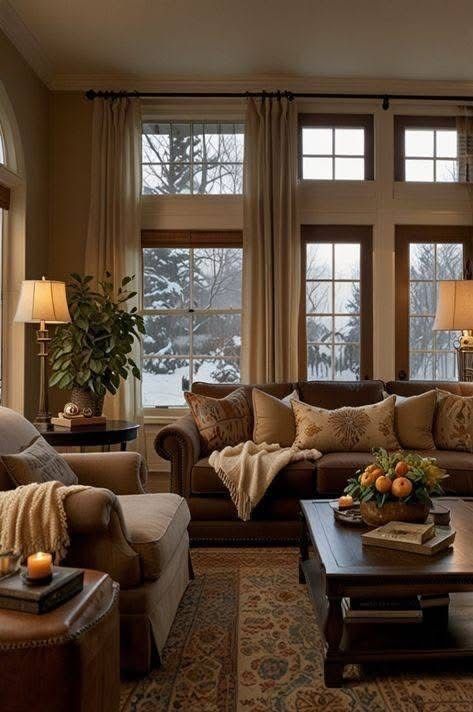
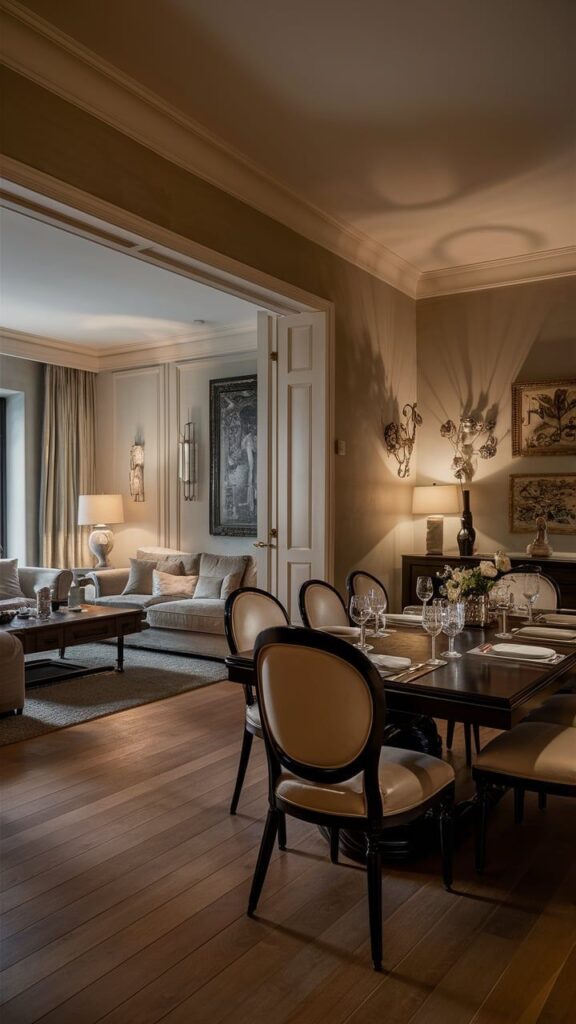
Choosing a Warm and Inviting Color Palette
Warm, cozy spaces start with the right colors. Picking welcoming shades like rich earth tones and thoughtful accents can help you set the mood and create comfort throughout your home.
Incorporating Warm Tones
Warm tones like deep reds, golden yellows, and soft caramel instantly make a room feel inviting. These shades mimic the glow of a fire or the sun, bringing subtle energy without feeling overwhelming.
To use warm hues effectively, try painting a feature wall or updating your upholstery with rusty oranges, muted golds, or brick reds. These colors work well with both classic and modern decor.
Layering these tones in your pillows, rugs, and curtains creates depth. Mixing various shades of warmth, rather than sticking to a single color, results in a more dynamic and lived-in atmosphere.
A quick table of common warm tones:
| Color | Typical Use |
|---|---|
| Burnt Orange | Accent walls, décor |
| Honey Yellow | Throws, curtains |
| Deep Red | Rugs, cushions |
Avoid overly saturated shades. Opt for subtler, earth-based versions for a cozy aesthetic.
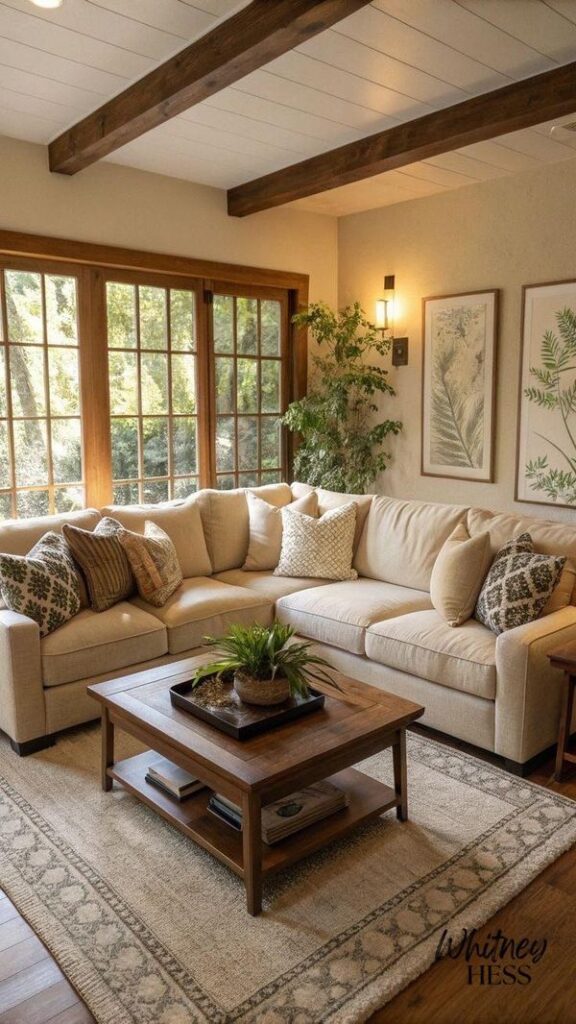
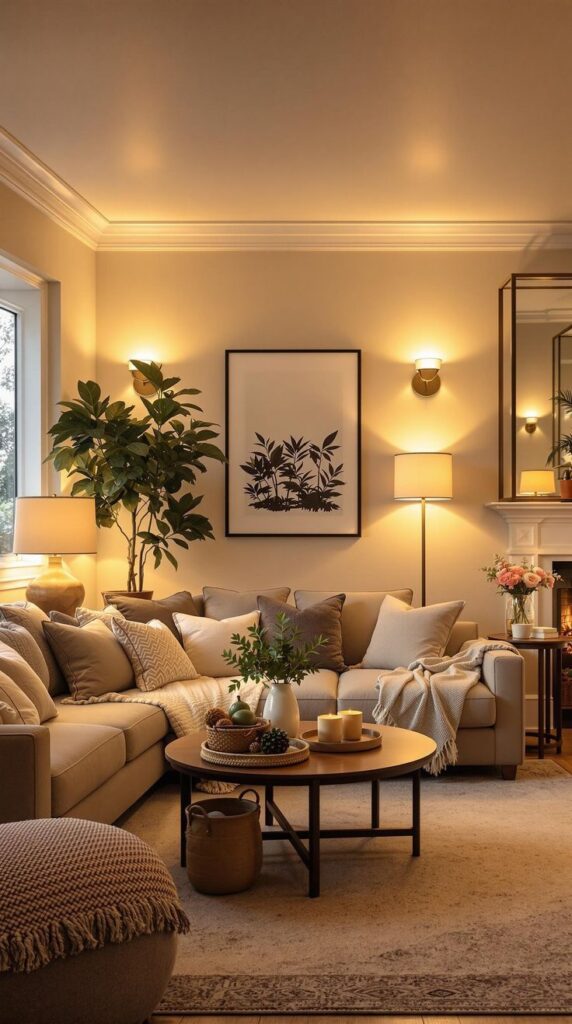
Using Terracotta and Earthy Shades
Terracotta is a standout choice for a cozy interior because it feels natural and grounded. This earthy orange brings a rustic yet sophisticated look to kitchens, living rooms, and bedrooms.
You can introduce terracotta with vases, ceramics, floor tiles, or soft furnishings. It pairs well with neutrals like taupe or muted greens and offers a welcoming contrast to cool tones.
Earthy colors—such as clay, sienna, olive, and beige—help balance brighter warm tones. These shades add warmth without overpowering your space and keep the overall vibe relaxed.
Try layering terracotta with natural textures like wood, jute, or linen. This enhances the comfy, organic atmosphere and keeps your space feeling connected to nature.
Accent Colors for a Cozy Atmosphere
Accent colors let you personalize your warm color palette and add depth. Deep browns, muted greens, and soft neutrals like cream or taupe are popular choices for cozy environments.
Consider using accent colors in throw pillows, artwork, lamps, or area rugs. A small pop of burgundy or olive green can break up a predominantly warm palette without detracting from a sense of comfort.
Stick to a palette of 2-3 accent colors. This keeps things cohesive and avoids visual clutter. Patterns and textured accents can add interest, but don’t overwhelm the main warm tones.
For extra coziness, use dimmable lighting in accent shades or incorporate metallic touches like bronze or warm gold. These additions will enhance the warmth already present in your chosen palette.
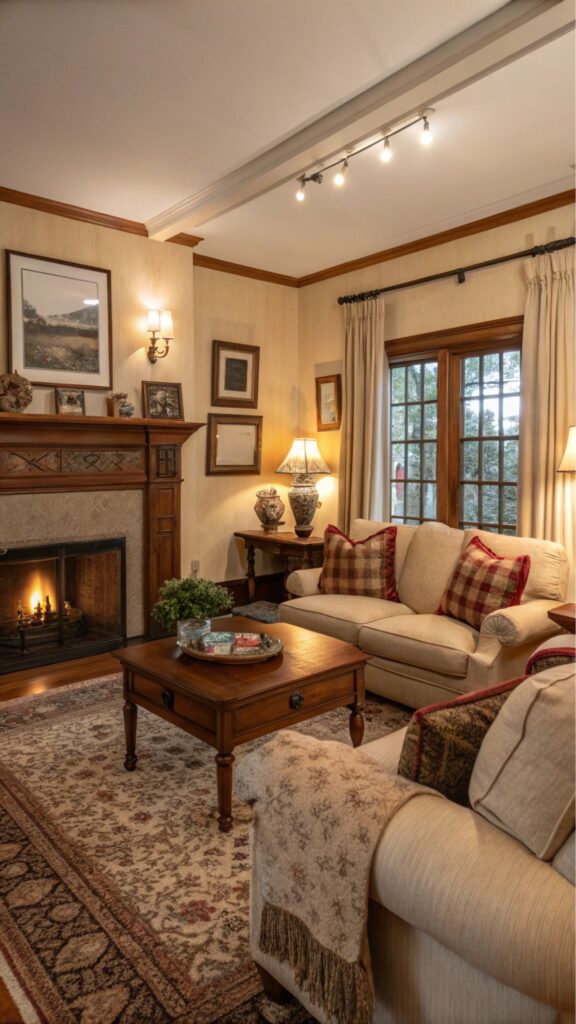

Layering Textures and Soft Furnishings
Layering textures transforms a space from flat to inviting by combining cushions, throws, upholstery, and other elements with different tactile qualities. Select materials and finishes that not only look good, but also make you want to sit and stay awhile.
Cushions and Throws Selection
Mixing various cushions and throws creates depth and warmth on your sofa or bed. Choose cushions in a range of fabrics such as velvet, linen, and cotton for both comfort and visual appeal. Vary the size and shape to make arrangements feel collected rather than stiff.
When it comes to color, neutrals are a safe base, but adding a few pillows with subtle patterns or muted warm tones helps everything feel harmonious. A few options can include:
- Velvet cushions for a plush look
- Linen or cotton accents for a crisp, casual effect
- Patterned pillows in soft, earthy colors
Creating groups of two or three cushions in different textures allows for easy updates and keeps your seating area looking fresh and inviting.
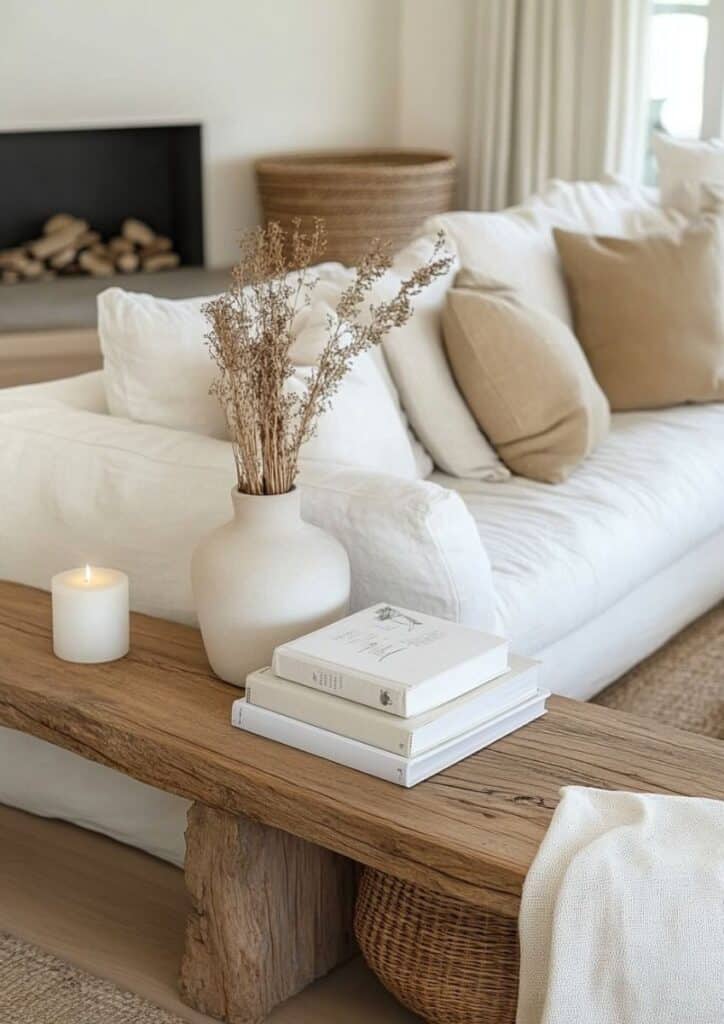
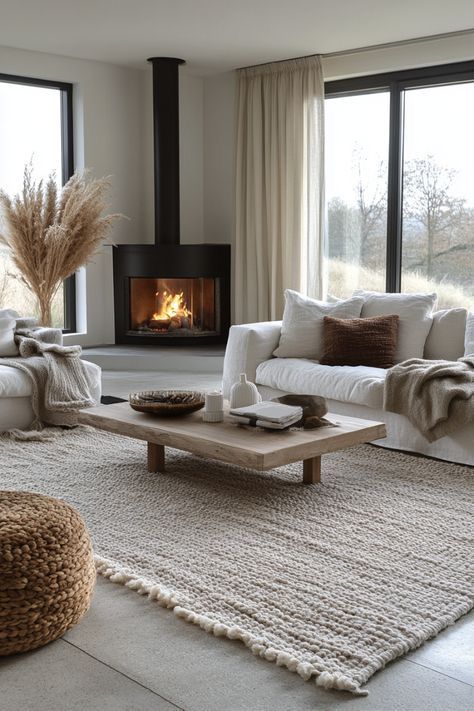
Incorporating Faux Furs and Chunky Knits
Materials like faux fur and chunky knits instantly increase coziness and add a tactile, inviting layer to your space. Drape a faux fur throw over the arm of your sofa or a chunky knitted blanket at the foot of your bed for visual interest.
Chunky knits provide a relaxed, handmade look. They’re ideal for creating a laid-back vibe and offer excellent warmth for lounging. Faux furs bring in a hint of luxury while remaining practical and durable.
Pro tip: Choose light or natural shades for a soft, Scandinavian-inspired look, or opt for deeper hues to add rich contrast to your space.
Blankets and Upholstery Ideas
Soft furnishings like blankets serve both comfort and style. Drape a woven or textured blanket over a chair or fold it neatly in a basket for guests. Mix in quilted, wool, or lightly patterned throws to layer warmth without overwhelming the room.
Your choice of upholstery sets the foundation for layering. Sofas or armchairs in fabrics like bouclé, brushed cotton, or soft leather add an instant feeling of comfort and durability. If you’re updating upholstery, consider slipcovers in tactile materials for flexibility and easy care.
A simple table to illustrate textile options:
| Material | Feel | Best For |
|---|---|---|
| Bouclé | Nubby, soft | Sofas, chairs |
| Wool | Warm, cozy | Blankets, rugs |
| Linen | Light, crisp | Cushion covers |
Enhancing the Tactile Experience
A cozy room is as much about how it feels as how it looks. Combining soft throw pillows, textured blankets, plush rugs, and even smooth wooden trays on tables will ensure there’s always something inviting to the touch.
Focus on areas where people interact most, like the sofa or reading chair. Layering several types of textiles nearby—such as a soft throw, a knit pillow, and a wool rug—invites people to relax and engage with the space. Choose accessories like woven baskets or ceramic bowls for added texture and interest.
Always pay attention to the way different materials contrast and work together, as a balance of textures prevents the space from feeling too uniform.
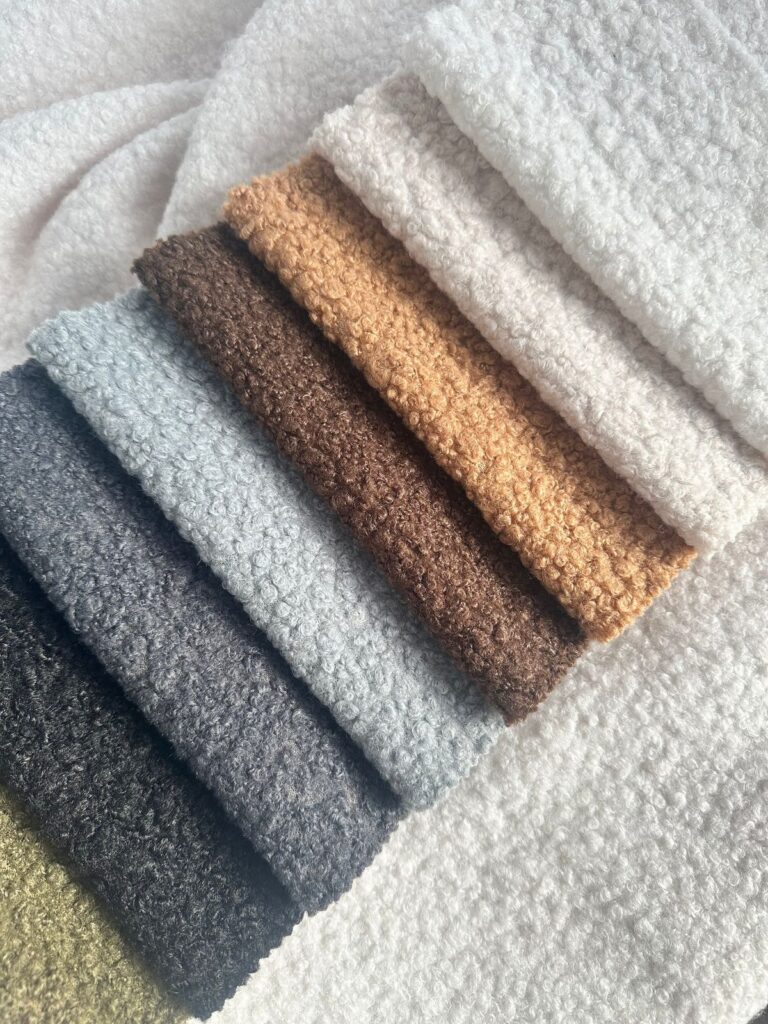
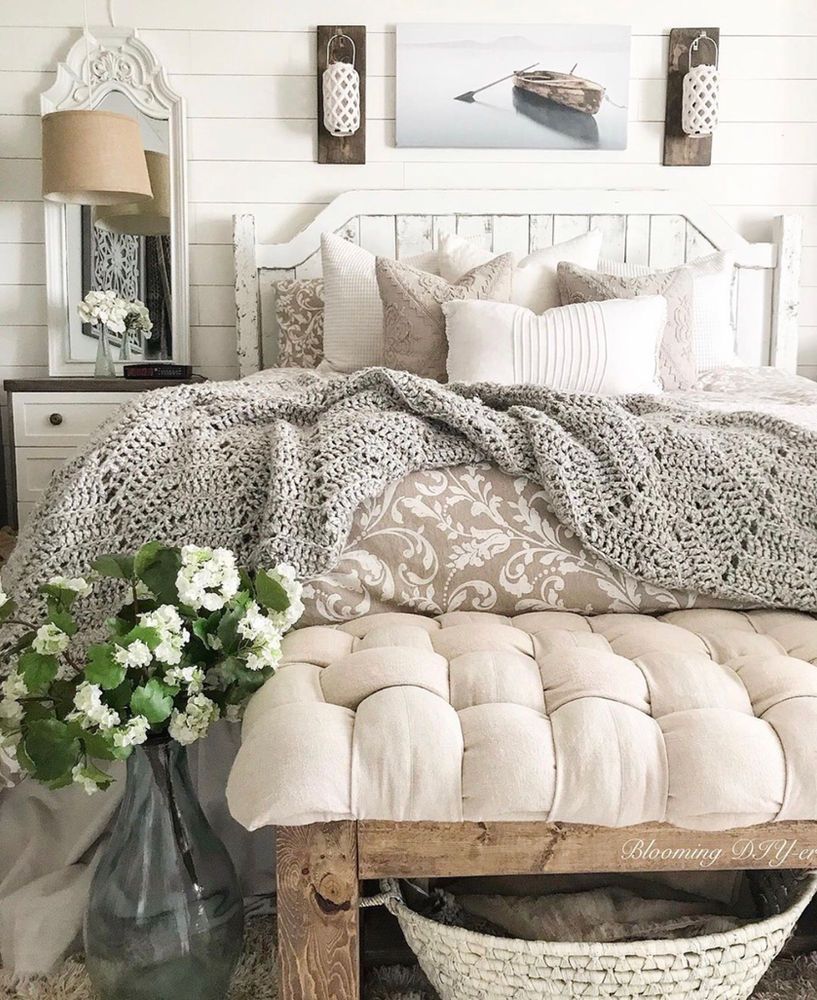
Lighting for a Cozy Ambience
Lighting is key for creating a warm, comfortable atmosphere in your home. Balancing different types of lights, focusing on color temperature, and using decorative touches help make any space instantly cozier.
Layered Lighting Strategies
Layering lighting means using different types of lights together, such as ambient, task, and accent lighting. This approach helps avoid harsh brightness and creates visual interest. Combine ceiling fixtures with softer wall sconces and directional task lighting to achieve a balanced look.
Ambient light fills the space, while task lighting—like a focused table lamp—helps with reading or hobbies. Accent fixtures, such as a small spotlight or a cluster of fairy lights, highlight art or architectural details. Mixing multiple light sources at different heights reduces shadows and makes the room feel more inviting.
If you have adjustable fixtures or dimmer switches, use them to fine-tune each light layer. This flexibility lets you set the mood for activities that range from relaxing evenings to casual gatherings.
Warm Lighting Solutions
Bulb choice affects whether your room feels cozy or stark. Select bulbs that emit warm, soft light—usually around 2700K to 3000K on the color temperature scale. Warm-toned LEDs or incandescent bulbs work well, giving a gentle yellow glow.
Steer clear of bulbs labeled “daylight” or with higher color temperatures, as the cool white can feel harsh and unwelcoming in a cozy space. For extra warmth, look for bulbs labeled “soft white.”
Adjusting brightness is just as important as choosing the right color. Lower illumination, especially with dimmer switches, enhances intimacy and comfort. Reserve brighter lighting for work areas and keep the rest of your space softly lit for maximum coziness.
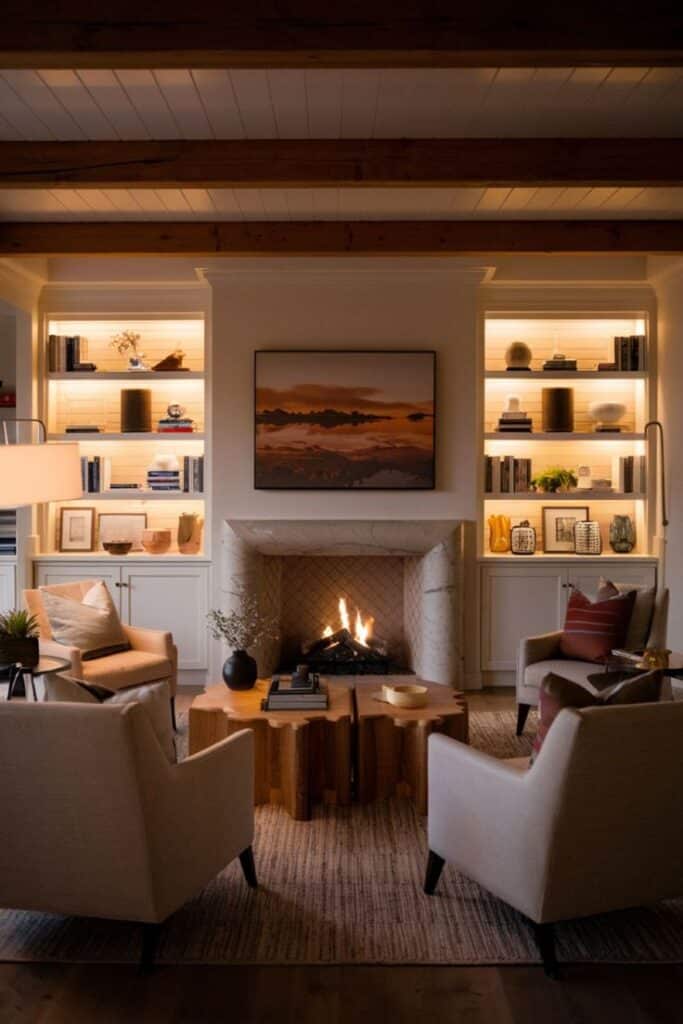
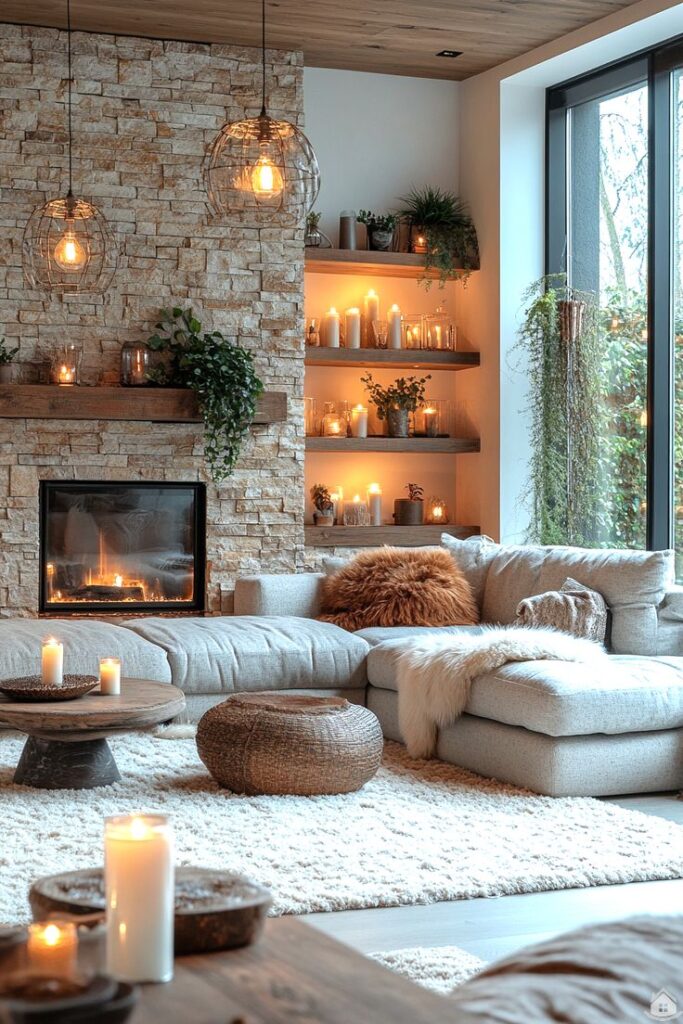
Choosing Floor and Table Lamps
Floor lamps and table lamps are practical and stylish additions to a cozy setting. Use a floor lamp in a dark corner to provide ambient light and eliminate cold spots. Pick models with fabric or frosted glass shades to diffuse light and avoid glare.
Place table lamps on side tables, shelves, or nightstands to create pools of warm light at eye level. Consider adjustable arms or angled shades for focused reading or crafting. When selecting lamps, prioritize models that allow you to use warm bulbs and enable easy control—such as touch switches or dimmers.
Arrange multiple lamps throughout your room for even light distribution. This layering effect feels natural and lets you control how bright or soft the space appears.
Decorative Candles and String Lights
Candles and string lights add a soft touch that instantly boosts coziness. Scented candles can fill your space with relaxing fragrances, such as vanilla or lavender, while their flickering glow encourages relaxation. Place candles on coffee tables, trays, or mantels, but never leave them unattended.
String lights and fairy lights are perfect for draping along shelves, windows, or headboards. Their small bulbs create a gentle sparkle, making even plain corners feel magical. Battery-powered string lights are convenient and safe for bedrooms or places without outlets.
Mixing candlelight with string lights gives your room a layered, dynamic feel. For extra charm, try placing fairy lights in glass jars or around picture frames to make personalized accents that stand out.
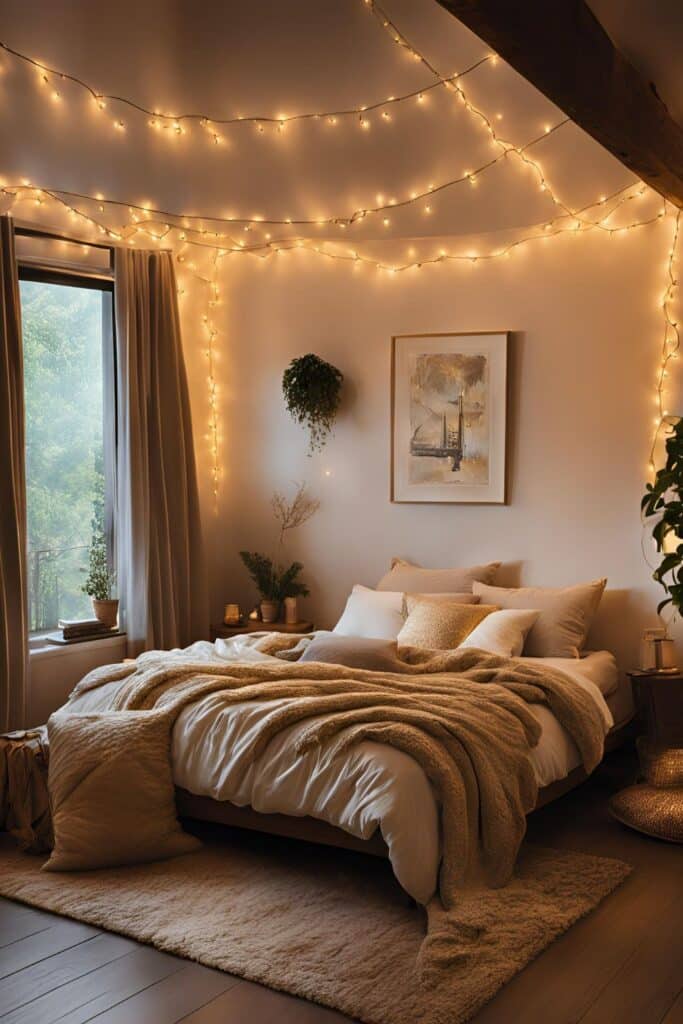
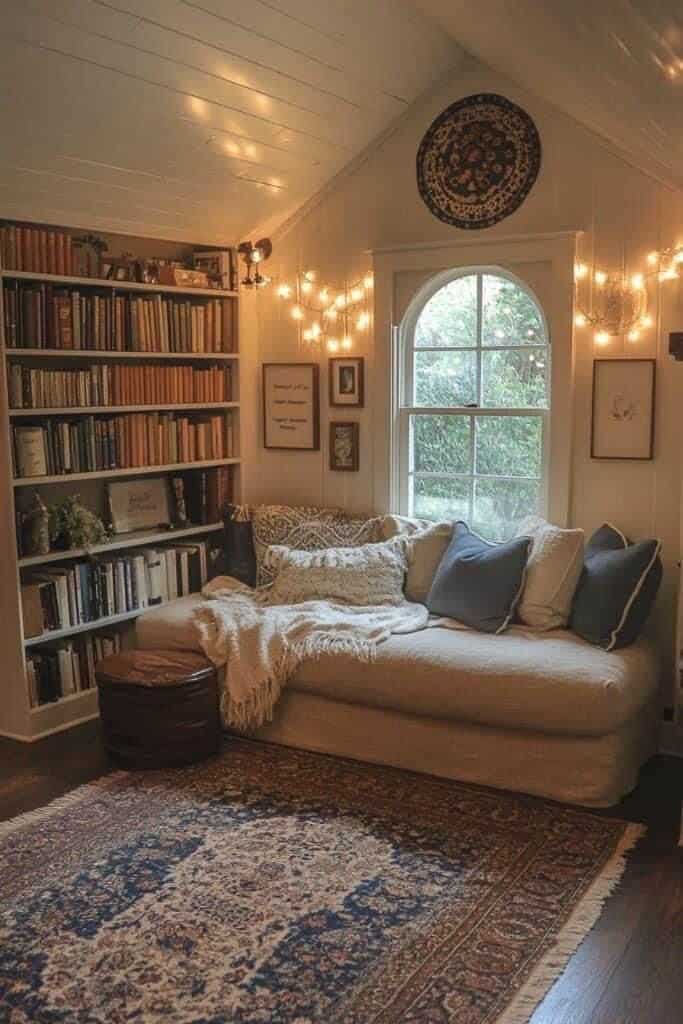
Integrating Natural Elements and Rustic Accents
Bringing nature indoors can add both visual warmth and tactile comfort to any living space. Using natural materials, woven textures, and rustic finishes helps create a welcoming environment that feels timeless and down-to-earth.
Natural Materials and Textures
Choose organic materials like wood, stone, linen, and wool for your key furniture pieces and soft furnishings. A simple wooden coffee table or sideboard introduces earthy character, while stone planters or terracotta vases ground your décor.
Layer soft, touchable textures throughout your room. Linen cushions, chunky wool throws, and cotton curtains create relaxed, comfortable energy. Plants add natural color and freshness—try grouping a few leafy greens on a console or windowsill for an easy boost.
Keep surfaces raw or only lightly finished. Avoid glossy lacquers and instead opt for matte, textured finishes. This approach lets the inherent beauty of wood grain, stone veins, or woven fibers shine.
Adding Woven Baskets and Jute
Woven baskets are an easy way to add rustic, functional flair. Use them for storing blankets, organizing magazines, or corralling toys in a living area. Their varied shapes and sizes bring casual charm without looking cluttered.
Jute rugs instantly warm up floors with their cozy, earthy tones. Place a large jute rug under your main seating area, or layer a smaller one inside an entryway for subtle texture. Jute runners work well in kitchens or hallways, giving high-traffic spots added resilience.
Look for other woven details, such as jute pendant lights or wicker lampshades. These subtle additions repeat texture around the room, tying every corner together with a relaxed, natural feel.
Wooden Accents and Rustic Charm
Introduce rustic charm with reclaimed wood shelves, exposed ceiling beams, or vintage wooden stools. These features celebrate imperfections—knots, grain patterns, and weathered edges all add authenticity and individuality.
Choose wooden photo frames, candle holders, or trays to sprinkle natural elements onto side tables or shelves. Mixing wood tones in a single room can work; just keep finishes similar in texture and warmth to create a unified look.
Antique market finds, such as old crates or carved bowls, double as practical storage and conversation starters. These pieces tell stories, providing a lived-in feel that makes a space genuinely welcoming.
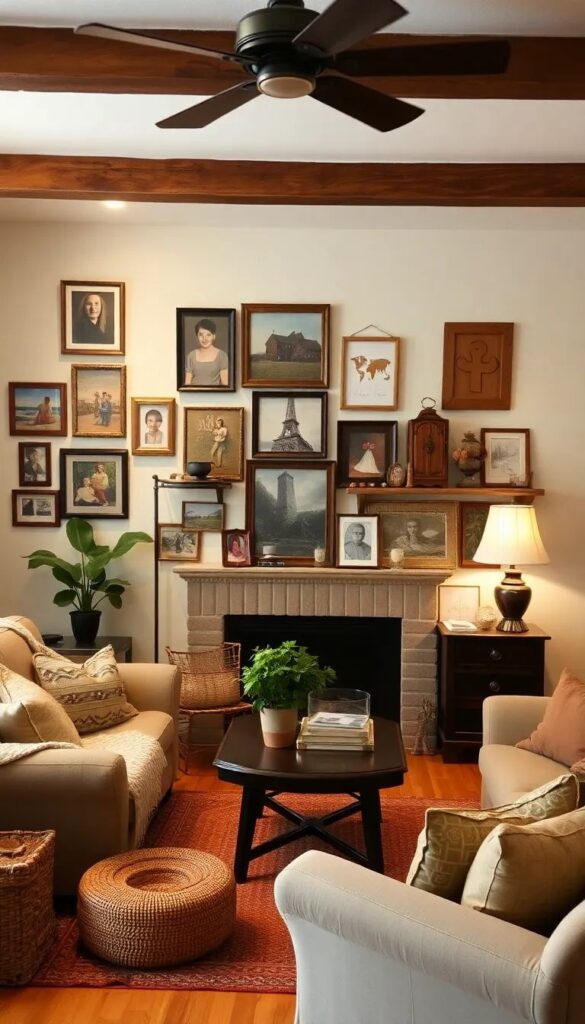
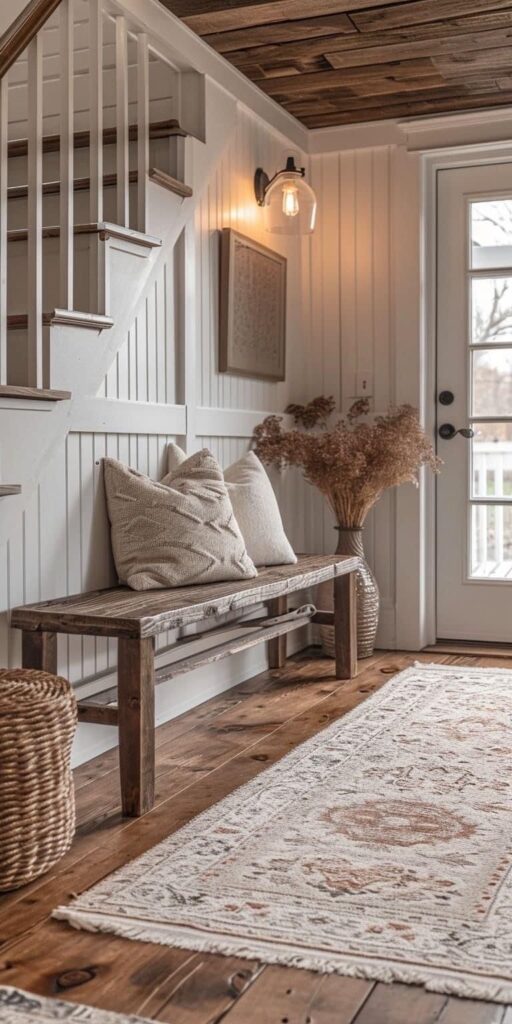
Creating Cozy Nooks and Functional Spaces
Cozy nooks give you a dedicated spot for quiet moments, while thoughtful furnishing and accessories add both comfort and style. Emphasizing smart choices like the right side table, warm drapes, and inviting scents makes these spaces feel welcoming and uniquely yours.
Designing Cozy Nooks
A cozy nook starts with location. Look for an underused corner, bay window, or alcove—any space that feels tucked away. Add a plush chair, a small loveseat, or even floor cushions for comfortable seating.
Layering is key. Incorporate soft throws, textured pillows, and a small rug to define the area and make it inviting. Personal touches, like framed photos or a favorite book collection, help make the space feel like your personal retreat.
Lighting matters. Use a floor lamp or wall sconce to create a soothing glow. If possible, let in natural light during the day to keep your nook bright and uplifting. Place your seating to face outdoors or the room’s focal point for a pleasant view.
Choosing a Side Table for Comfort
A well-chosen side table is both practical and essential for your nook. Look for a table that is the right height for your chair so you can easily reach your drink, snacks, or reading materials.
Consider the table shape and size. A petite round or oval side table works beautifully in tight corners, while a slim rectangular table suits narrow spaces. If storage is a priority, select a table with a lower shelf or drawer to keep essentials out of sight.
Finish options can affect the vibe. Warm natural wood adds coziness, while painted or metal finishes can introduce a touch of personality. Place a small lamp, a stack of books, or a decorative bowl on the table for easy access and style.
Incorporating Heavy Drapes for Warmth
Heavy drapes can instantly transform your nook into a warm and inviting space. They not only add texture but also help block out cold drafts, which is especially useful for window nooks.
Opt for rich fabrics like velvet, chenille, or thick linen to enhance coziness. When choosing colors, earthy tones and deep hues create a relaxed mood. Mount the drapes higher and wider than the window to maximize the sense of enclosure and make your nook feel snug.
For added flair, use tiebacks or decorative rods. Heavy drapes can also help reduce noise, providing a quieter environment perfect for reading or relaxing.
Finishing Touches: Potpourri and Accessories
Details complete the experience in your cozy nook. Potpourri placed in a decorative bowl on your side table adds a subtle, welcoming scent. Choose blends with calming notes such as lavender, cedar, or vanilla for a soothing atmosphere.
Further personalize the space with a soft throw blanket, a few favorite books, or art pieces you love. Small potted plants or succulents bring a touch of greenery and freshness.
Keep clutter to a minimum. Use trays, baskets, or small boxes to tidy away items like remotes, notepads, or pens. These small touches make your nook easy to use and enjoyable every day.
- 0shares
- Facebook0
- Pinterest0
- Twitter0
- Reddit0



